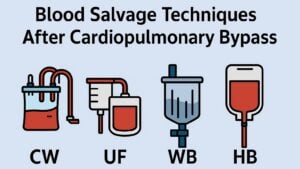The field of perfusion has undergone significant transformations over the past three decades, driven by advances in medical technology, an increasing number of perfusion education programs (PEPs), and a growing demand for skilled perfusionists. This study explores the feasibility and benefits of implementing a centralized application service (CAS) for PEPs in the United States. By analyzing current enrollment trends and the challenges of decentralized admissions, the research highlights how a CAS could enhance efficiency, reduce costs, and improve access for prospective students.
Perfusionists play a crucial role in cardiac surgery and other medical procedures requiring extracorporeal circulation. As the demand for cardiovascular procedures increases due to an aging population, the need for trained perfusionists continues to rise. Over the years, the number of accredited PEPs has fluctuated, with 35 programs in 1994, a decrease in subsequent years, and 21 accredited programs as of 2024. Three additional programs are pending accreditation, reflecting renewed interest in expanding the profession.
Currently, there are two primary entry-level degrees in perfusion: a post-baccalaureate certificate (offered by 25% of programs) and a master’s degree (offered by 75% of programs). The number of students enrolling in and graduating from PEPs has been steadily rising, correlating with a 44.5% increase in certified clinical perfusionists between 2000 and 2023. With more applicants than available spots, competition for admission is intensifying, further emphasizing the need for an efficient and standardized application process.
Challenges of Decentralized Admissions
The current admissions process for PEPs is decentralized, requiring students to apply separately to each institution. This can be costly, time-consuming, and inefficient, as each program has unique application requirements, fees, and deadlines. By contrast, many other health professions, including medicine, dentistry, and physical therapy, have adopted CAS platforms that centralize the application process, allowing students to submit a single application to multiple institutions.
Countries like Germany and Brazil have long used centralized admissions systems, which simplify the process and provide students with a more equitable method of applying to educational programs. In the United States, over 40,000 educational programs across various fields have already implemented CAS technology. This system streamlines admissions by reducing administrative burdens on institutions, enhancing transparency, and lowering costs for applicants.
Potential Benefits of a Centralized Application System
A CAS could significantly reduce application costs for perfusion students. The study found that the average cost to apply to all 23 PEPs in 2024 was $66.17 per program, amounting to $1,522 for a student applying to all available programs. If a CAS similar to the Allied Health Centralized Application Service (AHCAS) were adopted, the average application cost would drop to $45.22 per program, totaling $1,040 for all applications—a substantial 31.6% cost reduction.
Beyond cost savings, a CAS could improve applicant access by simplifying the submission process. Instead of preparing multiple applications with varying requirements, students could submit one standardized application with all necessary materials, such as exam scores, transcripts, and recommendation letters. A verification process would ensure completeness, reducing the risk of missing documents that might delay admissions decisions.
Additionally, a CAS could help programs attract a more diverse pool of applicants. By making the process more accessible and affordable, students from underrepresented backgrounds may be more inclined to apply, ultimately promoting diversity within the profession. The adoption of a CAS aligns with broader trends in higher education admissions, where centralized systems have been shown to increase application numbers and improve student placement.
Conclusion
The study underscores the growing need for an improved admissions process for perfusion education programs. The increasing number of accredited PEPs and the heightened demand for trained perfusionists necessitate a more efficient, cost-effective, and accessible application system. Implementing a centralized application service could provide significant benefits, including lower costs, reduced administrative burdens, and a more diverse applicant pool.
As the perfusion profession continues to evolve, adopting CAS technology could enhance recruitment efforts, ensuring that the field remains competitive and well-equipped to meet the needs of an aging population requiring cardiovascular interventions. By learning from other allied health professions that have successfully transitioned to centralized admissions, PEPs can modernize their application processes, ultimately strengthening the future of perfusion education and practice.
Study ranking = 3 (moderate quality) The study provides valuable insights into admissions processes and application costs for perfusion education programs but lacks experimental or randomized data. The findings rely on existing enrollment trends and comparisons with other fields, making it an informative but not highly rigorous scientific analysis.







